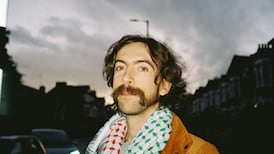The most "explosive issue" facing planners going into the new millennium is the "crazy prices" of houses in Dublin, city councillors warned yesterday when they discussed the Draft Dublin City Development Plan.
The draft plan, as well as spelling out zoning requirements and general site development standards, sets out policies and objectives in areas from residential development to tourism and from conservation and civic design to transportation and shopping.
The plan will be on public display from April to June. People can then make submissions and these will be discussed in September by councillors, who will be able to make amendments. The biggest concern yesterday was spiralling house prices. Mr Tony Gregory TD , said this was the explosive issue facing them. Prices were completely out of the reach of ordinary Dubliners and the plan did nothing to address this. Urgent action would have to be taken to deal with the problem before it got out of control.
Mr Eric Byrne, Democratic Left, also expressed concern about the housing situation and said most of what related to housing in the draft plan was "aspirational".
It was now a case of "ethnic cleansing" in Dublin city, with working class families on the average industrial wage having to leave their community to get a house.
They had to leave the areas they had lived in all their lives because the price of even the smallest house was so outrageously high. Senator Joe Costello, Labour, said he believed 30 per cent of houses in the tax-designated areas should be given over to social housing. This would ensure the city was not totally torn apart and old Dublin families dislodged by developers. There were mixed views on whether the city should go for "high-rise" development. With the extreme shortage of building land, some speakers felt a few high-rise buildings should be erected, particularly in the docks area.
Ms Mary Mooney (FF), said she was pleased with the fine development in the Christ Church and Temple Bar areas but this came to a stop at Francis Street. Everything then went westwards, leaving the rest of the area derelict. Thousands of tourists passed through this area every year on the way to the Guinness brewery and all they saw was dereliction. She felt more houses should be built for the people, who didn't want to go off to Kildare and Meath to live.
She did not see anything wrong with building high-rise houses if it kept people in the area. Senator Joe Doyle (Fine Gael), chairman of the council's planning and development committee, said he was glad there was a commitment to do something about employment and encourage small industry in the city. He said this was only a draft plan and any changes they wished to make could be done by amendment motions in September.
Earlier in the meeting, there was some criticism of the previous plan, which one councillor described as a charter for demolishing good houses and some important buildings in the middle of the night or in the early hours of the morning.
However, the majority of members disagreed with this view and believed progress had been made during the lifespan of the last plan. The increase in the population of the city, which was once again becoming a "living" city, was mainly due to prosperity and the rampant Celtic tiger.
Members also felt that there should be more pedestrian areas, and better facilities for cyclists. It was suggested that another three pedestrian bridges should be built over the Liffey.
Concern was expressed about the closure of schools and hospitals. With the population of the city increasing and with more apartments being built, it was essential to have these facilities. Replying to the debate, the city manager, Mr John Fitzgerald, agreed high house prices was the burning issue facing them. He said some intervention would have to be made but could not say at this stage what form that would take. It was something they would look at.







